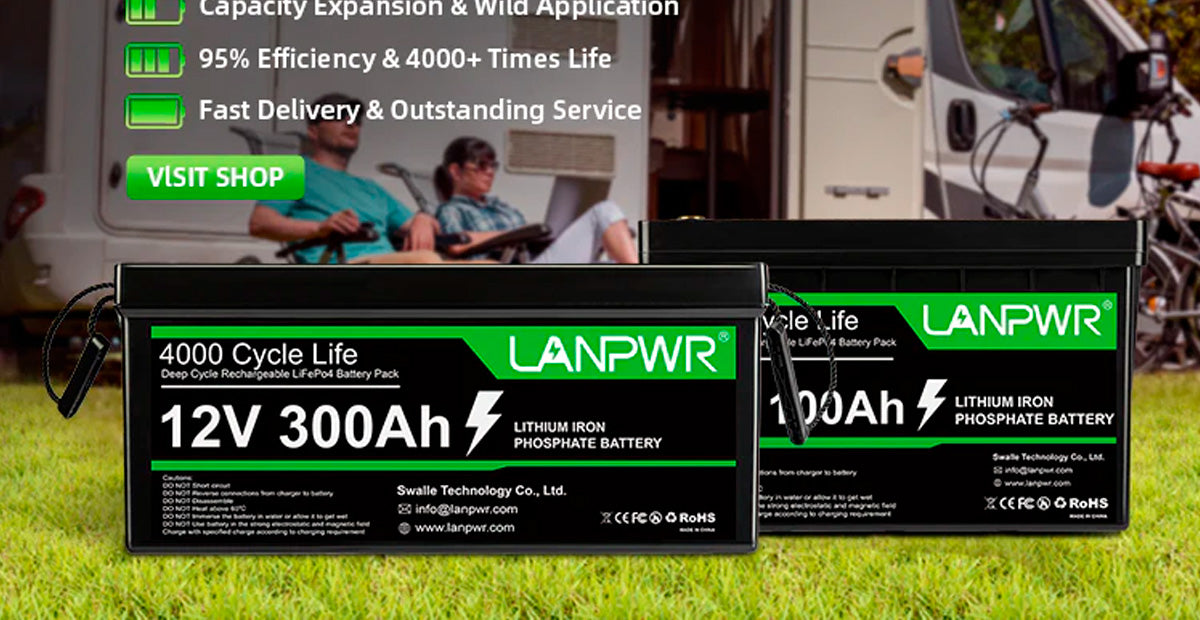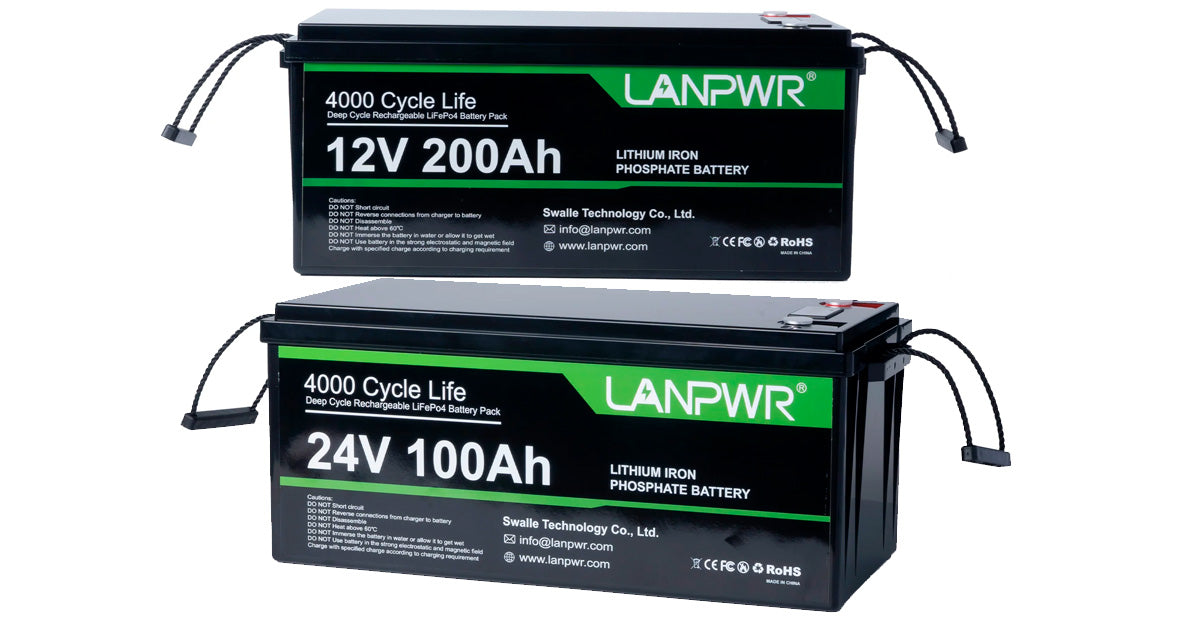Overview of LiFePO4 Batteries
Lithium Iron Phosphate (LiFePO4) technology has recently taken the lead in the field's energy storage system technology competition, exceeding users' expectations for energy storage with its unequaled features. LiFePO4, which possesses a high safety rating and long-term stability as primary qualities, competes with other battery technologies for those applications where the ability to function for extended periods of time and under adverse conditions is vital. These batteries resist thermal runaway and have a higher cycle life than the classic lithium-ion batteries.
Importance of Prismatic Cells
In the world of LiFePO4 batteries, prismatic cells with advanced design and functions are exceptional, making them so special. These cells specifically balance the subsidiary space and improve storage energy efficiency for multiple applications. Their structured form factor allows better packing and contributes considerably to the overall energy density, acting as a stable solution for energy-intensive needs.
Taking into account Techno-LiFePO4 Prismatic Anodes.
Composition and Structure
Materials Used
The prismatic cells of LiFePO4 possess a lithium-iron-phosphate compound as their core constituent, giving them a notable edge over other kinds due to stability affinity and safety conditions. This choice of material is of the utmost importance in cases where potential safety hazards like overheating and fire are possible. Li-Fe-PO slightly differs from lithium-cobalt-oxygen chemistry regarding its thermal and chemical stability, resulting in a battery with a longer lifespan and higher efficacy.
The Layout of Prism Cells
Due to their design and construction, prismatic cells are the most distinctive type of battery among others, like cylindrical and pouch cells. Their rectangular layout helps in the optimal space division and allows the configuration of the batteries more precisely, making their application feasible in limited and structured spaces such as electric vehicles and stationary energy storage systems. Such a design results in better energy control and scalability, which are the two vital aspects that are crucial for massive deployments.
Energy Density Explained
What is Energy Density?
To begin with, Energy density is the criterion on which the battery's power and productivity wholly depend. It measures the amount of charge a battery can accept related to its mass or volume. Hence it is considered the principal index of the battery’s performance. The density of energy is the measure of how much energy can be stored in a smaller, lighter package, and this is very important in applications where the space is limited and portable.
High-power Grammatical features of LiFePO4.
The material formula and design are the key features of the LiFePO4 cells, which lead to increased energy density. These features enable the cells to continue working with high performance and reliability, even in the face of severe conditions. This vast power density is indispensable for equipment that can manage long-lasting operations without the bulky and large power plants’ typical requirement of regular recharging.

Performance Characteristics
Discharge Rate
Understanding what is the discharge rate.
The discharge rate of a battery is an essential performance parameter that shows how fast the battery can release its stored energy. This particular rate is the main factor for applications that need high power for a short time, e.g., a power tool or an accelerating car. By increasing the discharge rate (the speed at which energy is being delivered), one device is better equipped to provide immediate power when it is asked to do so.
LiFePO4 cell's discharge rate
Unlike most LiFePO4 prismatic cells, this technology is characterized by its higher cycling rates, which is vital for fast applications. They are specially made to carry more currents, making them particularly suitable for energy supply where demand quickly increases. The high technology in their design also guarantees that performance does not drop when the discharge rates are increased, keeping the efficiency steady across the whole range of operation conditions.
Operating Temperature
Temperature Range
LiFePO4 batteries perform at high efficiency across temperatures from very cold to very hot, just like any good battery should, irrespective of the environmental conditions. Batteries have to deal with the extreme strains of temperatures that can get so low they can reach -40 degrees but can also get so hot that they can exceed 60 degrees. They still have to hold up and perform. Such a wide spectrum of applications makes LiFePO4 cells perfect for cold-weather car electronics and hot regions energy storage.
An Effect on Performance
Battery cells' efficiency and longevity are deeply conditioned by operating temperature. The LiFePO4 cells are designed to be less temperature sensitive, which helps prolong their life and keep their performance within the required standards. Resilience here means that energy storage and grid stability systems become more easygoing and dependable. They can only assure that there is power where it is required and when it ought to be there, with just limited loss of energy.
Manufacturing LiFePO4 Prismatic Cells into various devices is now an imminent reality.
In Electric Vehicles
The positive effects of EVs
Electric cars have these advantages since the integration ofolin phosphor tr初子(LiFePO4)prismatic cells. They have high specific energy density and excellent safety characteristics. Powered chargeable batteries support the driving range extensions of EVs, including ensuring safety measures are under the vehicle's control. Besides, their resistance to frequent charging and discharging cycles is appropriate for the changing energy demands of electric vehicles and contributes to overall vehicle efficiency and performance.
As we build our products, we aim to showcase their practical application in specific industries. Introduction: Understanding the positive impacts of sustainable fashion on the environment and the fashion industry is crucial. By adopting sustainable practices, fashion brands can increase their long-term financial stability, define a brand position, and combat environmental degradation and climate change.
Using LiFePO4 prismatic cells in electric vehicles is commonplace, with many vehicle makers adopting these batteries to benefit their cascade. These cells have been the driving force behind the development of electric vehicles that can go the distance and charge in the shortest time possible rather than regular battery technology. The high-performance road holding property and robustness of fast electric cars of the new generation have made them a favorite choice for the new generation of electric vehicles.
A primary concept for energy storage systems is
Scale Energy Storage
Storage systems are an integral part of the energy ecosystem, especially those that pair up with renewable sources like solar and wind, which call for reliable and efficient storage options. LifePo4 prismatic cells are the ultimate kind for this use case, where large amounts of energy are stored and delivered as predicted. They are stable and have high energy density, which makes them ideal for solving the intermittency problem of renewable energy sources and producing a steady power supply.
Grid balancing, infrastructure development, and energy storage are some of the business opportunities renewable integration brings.
Connecting LiFePO4 cells to renewable energy infrastructure improves the capability and safety of these infrastructures. These batteries can overcome the problem of the high variation of power production from renewable sources, improving the overall grid stability. Besides, their long lifespan and low maintenance requirements guarantee a small operational cost of energy storage systems, and that angers renewables to be practical and economically viable.
Pros and Cons.
Key Advantages
Life span and Faithfulness
The life of LiFePO4 prismatic cells is the most striking among their advantages. The company's batteries are specifically made for these exact purposes: to withstand thousands of charging cycles and discharging without significantly reducing efficiency. This durability also means fewer replacements and less long-run cost, making them a viable option for consumers and businesses.
Safety Features
Battery safety has become one of the crucial aspects of modern battery technology, and that’s why LiFePO4 cells hold the leading position in it. They enjoy the advantages of chemical stability, which suppresses the possibility of explosion either in their making or during operation. This safety system is especially necessary in areas where battery malfunction might result in catastrophic events.

Limitations and Challenges
Cost Issues
While LiFePO4 prismatic batteries have many admirable qualities, they are usually very expensive compared to others. This could be caused by their long life span and low program maintenance costs. And so, the money you pay upfront will ultimately be paid only less due to their low operation costs. In the long run, the operational and replacement costs will be reduced by applying this method, which will cover the initial cost.
Technological Challenges
Whilst these technologies play an important role, there are still some issues that must be addressed in terms of the LiFePO4 chemistry. Weight and density maximization and energy minimization are the primary objectives of researchers trying to keep batteries competitive with the newest technologies emerging in the market. The progress in this field might lead to the development of new applications and, thus, to a rise in the competitiveness of LiFePO4 batteries on the worldwide market.
Conclusion
The biggest advantage is its relatively long cycle life, to an astonishing 8-15 years at the full discharge rate. While doing this, we've explained the main points and the most extensive aspect of the lithium-ion phosphate prismatic cells. These batteries are the bedrock of modern energy solutions. They embody safety, reliability, and efficiency.
The future of LiFePO4 technology is bright with its ability to make continued advancements. Research and development are expected to ensure even more powerful tools and reduce the cost of production, thus making a broader range of purposes and operations available.
For all those who are thinking about the next generation of energy solutions, LiFePO4 prismatic cells are a very reliable and efficient alternative. Dive deeper into this subject of zero-emission energy sources with the aid of leaders like LANPWR GmbH, who are known to produce something like Odysseus' finest weapons in Europe. It is good to know and to be acquainted with these technologies to easily envisage how they can transform how you deliver energy storage and powering functionalities in applications.














Leave a comment
This site is protected by hCaptcha and the hCaptcha Privacy Policy and Terms of Service apply.